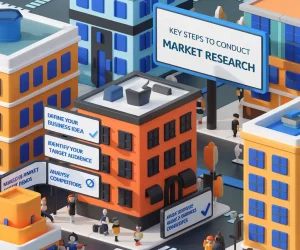Introduction
In today’s competitive market, tracking customer satisfaction is essential for understanding how well a company meets its customers’ expectations. However, many organisations use outdated tracking methods, missing out on valuable insights that could drive customer loyalty and improve satisfaction.
As a former client-side researcher in a FTSE 250 company, I know first-hand how challenging it can be to keep tracking surveys relevant. Often, these surveys remain unchanged for years, and their value diminishes. By modernising tracking customer satisfaction research, organisations can unlock powerful insights that support business growth and help them better serve their customers.
In this guide, we’ll explore innovative approaches to tracking customer satisfaction and offer actionable strategies for turning survey data into impactful business improvements.

The Importance of Tracking Customer Satisfaction
Tracking customer satisfaction isn’t just about collecting numbers; it’s about uncovering trends, understanding customer needs, and identifying areas for improvement. According to a 2022 study by Qualtrics, companies that effectively track customer satisfaction are 25% more likely to retain their customers. Retention is critical, as acquiring a new customer can cost up to five times more than retaining an existing one.
Despite these benefits, many companies don’t maximise the potential of tracking research. Most data simply gets reported without deeper analysis. However, by modernising tracking methods, companies can transform customer satisfaction research into a powerful tool for growth.
Common Challenges in Tracking Customer Satisfaction
Many organisations struggle to get meaningful insights from tracking studies. Here are some common pitfalls:
- Static Surveys: Often, companies use the same questions year after year, even as customer needs evolve. This leads to stagnant data that doesn’t reflect current customer priorities.
- Unclear Metrics: Adding new metrics without clear reasoning makes it difficult to interpret trends.
- Lack of Actionable Insights: Many tracking reports focus on numbers, offering little guidance on how to act on findings.
Addressing these issues is essential to ensure that tracking customer satisfaction remains relevant and valuable. Below, we’ll explore strategies for revitalising tracking research, making it more insightful and actionable.
Strategies to Maximise Value in Tracking Customer Satisfaction
When it comes to tracking customer satisfaction, a few key techniques can breathe new life into traditional surveys. By adopting innovative methods, companies can gather deeper insights and create a customer-centric approach that drives improvement.
1. Annual Analysis Review
One of the most valuable aspects of tracking customer satisfaction is the robust sample sizes collected over time. For example, a survey collecting feedback from just 200 customers per month yields nearly 2,500 responses annually. Analysing this data as a whole enables more detailed insights, revealing long-term trends and patterns.
Example: Annual Analysis at Robust Insight
At Robust Insight, we conduct annual reviews for our clients to extract deeper meaning from their tracking data. By aggregating responses, we can spot shifts in customer sentiment, loyalty, and satisfaction over time, allowing our clients to make data-driven decisions.
2. Subgroup Analysis: Identifying Key Customer Segments
Every customer base is diverse, and tracking customer satisfaction requires recognising the unique needs of different segments. Subgroup analysis allows companies to break down satisfaction levels across categories like age, gender, region, or income.
For example, a report by McKinsey showed that personalising customer experiences based on demographics increases customer satisfaction by 30%. By identifying which segments are most or least satisfied, companies can tailor their strategies to address specific needs, boosting satisfaction and loyalty. Learn more about our Data Analytics here.

How Subgroup Analysis Works
Consider segmenting your data by attributes like age, region, or employment status. For example, housewives in the North may have different needs than bankers in London. This segmentation helps companies identify high-satisfaction groups, as well as those needing more attention, ensuring that resources are allocated effectively.
3. Key Driver Analysis: Understanding What Drives Satisfaction
A critical element of tracking customer satisfaction is understanding the drivers behind customer perceptions. Key driver analysis uses regression models to reveal which factors most influence satisfaction, loyalty, or advocacy. According to a study by Harvard Business Review, businesses focusing on key drivers of customer satisfaction see a 20% improvement in loyalty.
Applying Key Driver Analysis
Typically, tracking surveys include various Likert-style questions about experiences with different touchpoints, like products and customer service. By identifying the top drivers of satisfaction, companies can prioritise improvements in areas that matter most to customers.
4. Impact Matrix: Prioritising Improvement Areas
Impact matrices are among the most popular tools for visualising and prioritising customer feedback. By mapping satisfaction levels against driver importance, these matrices identify underperforming areas that significantly impact overall satisfaction.
Example: Using Impact Matrices at Robust Insight
In our presentations, impact matrices help clients visualise which touchpoints need immediate attention. For instance, if “ease of access” is both low in satisfaction but high in importance, the matrix flags this as a key area for improvement. This actionable insight allows companies to allocate resources where they’ll have the most impact.

5. Customer Segmentation for Tailored Strategies
Segmentation in tracking customer satisfaction goes beyond basic demographic splits. By incorporating attitudinal questions and behavioural data, segmentation reveals distinct customer personas that respond differently to your products or services.
Real-World Application of Segmentation
For instance, tracking research may identify a segment of customers expecting income growth. This segment could be open to upselling opportunities, allowing the company to market premium products specifically to them.
In fact, research by Bain & Company shows that targeted marketing based on segmentation can increase revenue by 10–15%. This approach enables companies to market more effectively and engage each segment meaningfully.
6. Text Analytics: Unlocking the Power of Customer Comments
Text analytics tools are revolutionising the way we analyse open-ended responses in customer satisfaction surveys. Traditional manual coding often limits analysis to frequencies, while text analytics can categorise comments by theme and sentiment, revealing deeper insights.
Using Text Analytics for Deeper Insights
Text analytics categorises comments by themes (like product quality or service speed) and analyses sentiment within each theme. For example, a sentiment analysis on feedback about “product quality” could reveal whether customers speak positively or negatively. According to Forrester, companies that utilise text analytics improve their NPS by 20% on average, as they gain more actionable insights from qualitative feedback.
By connecting text insights to structured data, companies can identify improvement areas and link them to customer demographics or satisfaction levels. This layered approach enhances understanding and provides a complete view of customer sentiment.
Conclusion: The Benefits of Modernising Tracking Customer Satisfaction Research
Revitalising your approach to tracking customer satisfaction can unlock invaluable insights that drive business growth. By updating survey techniques, integrating segmentation, and using advanced analytics, organisations can ensure they’re truly customer-centric. This shift not only improves customer loyalty and advocacy but also positions the company as agile and responsive.
Why Revamping Tracking Research Matters
Refreshing tracking customer satisfaction methods gives your research team new insights to share with stakeholders. When data becomes actionable, it has the power to influence strategic decisions and support additional funding for future projects. In my experience, annual analysis reviews often lead senior management to commission follow-up studies or increase sample sizes.
Ready to Modernise Your Tracking Customer Satisfaction Research?
At Robust Insight, we specialise in modernising tracking research to unlock meaningful customer insights. Contact us to learn how advanced analysis techniques can transform your tracking studies and maximise the value of your data.
As an MRS member, we adhere to industry-leading standards in tracking customer satisfaction, ensuring ethical, high-quality research practices that deliver reliable insights.








